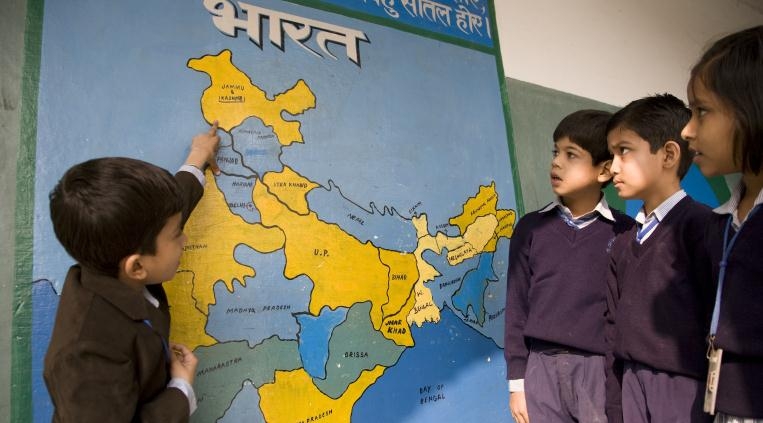Challenge
Although India’s development has been one of the most significant global achievements in recent times, its per capita income remains low and its challenges remain deep and complex. Despite having halved extreme poverty, India is still home to one-third (400 million) of the world’s poor and many of those who have recently escaped poverty are still vulnerable to falling back. Income inequality is on the rise, and structural inequalities have prevented entire groups (lower castes, tribes and women) from taking advantage of the opportunities that have opened up due to recent economic growth. Rates of maternal and child mortality remain stubbornly high and 40% (217 million) of the world’s malnourished children are in India. While primary education has been largely ‘universalized’, improving quality and learning at all levels remain a challenge. Addressing these challenges is not only central to India and its people, but will also impact global progress on the Millennium Development Goals, and efforts to reduce poverty and boost shared prosperity. Although half of the Indian population depends on agriculture for their livelihood, agricultural growth—at 3.1% over the last decade—has fallen short of government targets. With 10 million people migrating to towns and cities each year, the country is rapidly urbanizing, leading to demands for better services, jobs, infrastructure, environmental management, and affordable housing. Already, a quarter of the urban population lives in slums, often with no or limited access to basic services. Moreover, India’s overall infrastructure needs are massive: some 300 million people are not connected to the national electricity grid and those who are, face frequent disruptions.
Solution
The World Bank Group’s (WBG) proposed Country Partnership Strategy (FY13-17) supports the government’s goal of faster, sustainable, and inclusive growth. It seeks to tackle India’s most pressing development challenges, especially in the poorest and most isolated states. To meet the program’s overarching goals of accelerating poverty reduction and boosting shared prosperity, the Country Partnership Strategy will mark engagement in three broad areas:
Integration: Improved domestic, regional, and global integration will boost growth, as will more balanced growth across both low-income and more advanced states. WBG support focuses on improving infrastructure, mainly transport and power, strengthening the manufacturing sector (especially small and medium enterprises that are important sources of jobs); developing a skilled labor force that can respond to the needs of a fast growing economy; and improving the business climate to attract more private sector development, especially in India’s low-income states. To help India gain the maximum benefit from the potential offered by regional—and global—integration, the WBG will focus on facilitating collaboration in the South Asia Region and beyond, notably on issues related to natural resource management (water and hydropower), as well as on infrastructure and trade.
Transformation: The faster a country urbanizes, the faster it grows and Indian cities are growing quickly. The number of towns increased from about 5,000 in 2001 to 8,000 in 2011, and some 53 cities have a population exceeding 1 million. The WBG will help India address the many challenges of the rural-urban transformation by working to improve the livability of medium-sized cities. This will require improving infrastructure (transport, water and sanitation, and power), access to basic services, and strengthening institutional capacity of urban government. Successful urbanization cannot take place without an equally pronounced focus on rural development, and the creation of strong value chains for agricultural products. Improving the livability of Indian villages, and increasing agricultural growth, while creating more off-farm jobs, is also central to WBG engagement in this area. Urbanization, and sustained high economic growth, can be both a detriment to the environment as well as well as an opportunity for energy efficiency and greenhouse gas reductions. The WBG will support government efforts to promote more efficient environmental management to protect India’s natural resources.
Inclusion: Ensuring that everyone reaps the benefits of faster growth, regardless of social grouping, age, gender or where they live will require significant improvements in education at all levels, health and nutrition, social protection, and creation of meaningful rural livelihood opportunities. In addition to these areas, the WBG will work to increase access to financial services for poor households, improve access to electricity, and help enhance disaster risk management systems so people and their livelihoods are protected from natural calamities.

